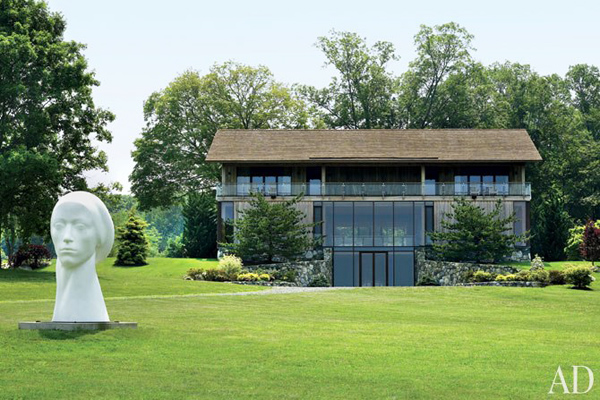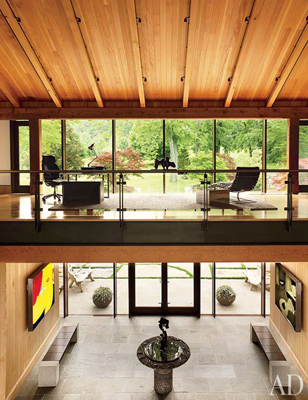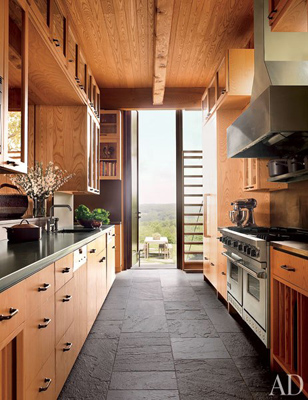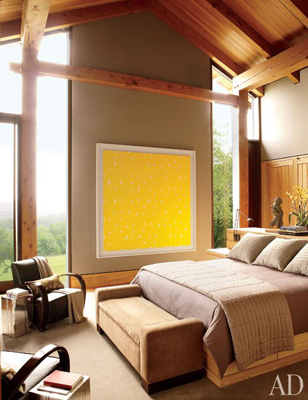
Around 25 years ago, Manhattan art collector and Abbeville Press publisher Robert E. Abrams purchased a 41-acre parcel one hour north of the city on which to build a country home. With panoramic Currier & Ives views of gently rolling hills, the property was enthralling—and daunting. “The spot was so gorgeous, my biggest fear was that I’d screw it up,” says Abrams, the son of pioneering art-book publisher Harry N. Abrams. Unsure of exactly what type of structure he wanted but unable to leave the site alone, Abrams started planting the first of more than 500 specimen trees. “By the time we were ready to proceed with the house, we had an arboretum!” says his wife, Cynthia Vance, an actress and a children’s-book acquisitions editor at Abbeville. “When we were married, in 1998, we had our rehearsal picnic on a deck specially built on the site.”
It would be another decade before the real building began. In the interim, Vance and Abrams bought a neighboring home to use as their weekend retreat, deciding the other land would be ideal for a capacious guesthouse, one that could also serve as a gallery and storage facility for their extensive collections of art and books. They hired Joel Barkley, a partner at Ike Kligerman Barkley Architects, a firm based in New York City and San Francisco, to develop a scheme tailored to both the topography and their needs. The trio spent nearly five years conceiving—and discarding—plans. “We have a beautiful portfolio of unbuilt houses,” Vance jokes.
 |
As part of their research, the architect and clients paid a call to Philip Johnson, the giant of American modernism, at his iconic Glass House in New Canaan, Connecticut. The visit had a profound impact on Barkley. “I love see-through houses,” he says, “and we had the perfect opportunity to design one.”
 |
Vance and Abrams, who have a young son, hadn’t planned on living upstairs from their collection. But just as construction on the barn was being completed, the couple decided they would move in and put up guests in the neighboring house instead. To help make the barn feel homey, Vance and Abrams called in Clodagh, the Manhattan interior designer who had worked with them on their Tribeca loft.
 |
While the paintings and sculptures were the barn’s raison d’être, the power of the architecture itself is undeniable. “Even without the art,” Abrams says, “the place is absolutely incredible.”
No comments:
Post a Comment